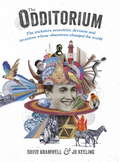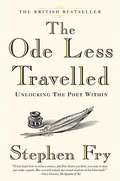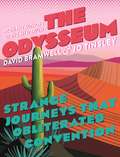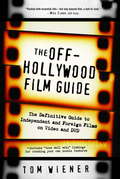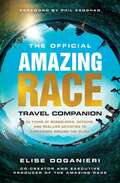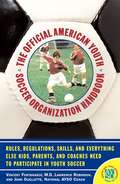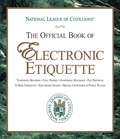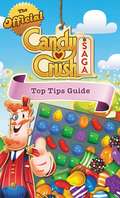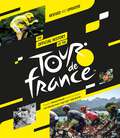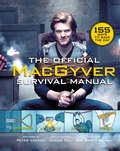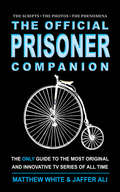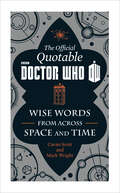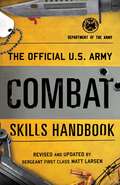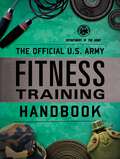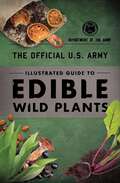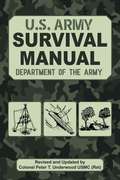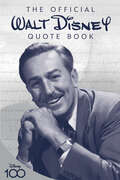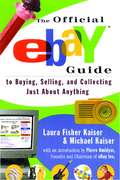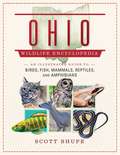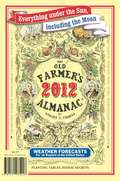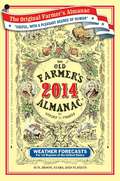- Table View
- List View
The Odditorium: The tricksters, eccentrics, deviants and inventors whose obsessions changed the world
by David Bramwell Jo Keeling'I LOVE THE BOOK... A BRILLIANT READ' Chris Evans, Radio 2 Breakfast Show'This book, that I approached with caution, turns out to be magnificent. Tested it with the Moondog entry. Passed A+' Danny Baker, Radio 5LiveA CELEBRATION OF CURIOSITY AND OBSESSIONStep into a world of gloriously unpredictable characters such as Ivor Cutler, Quentin Crisp, Joe Orton, Reginald Bray, Ken Campbell, Screaming Lord Sutch, Sun Ra, Buckminster Fuller, Timothy Leary and Ayn Rand.The Odditorium is a playful re-telling of history, told not through the lens of its victors, but through the fascinating stories of a wealth of individuals who, while lesser-known, are no less remarkable.Throughout its pages you'll learn about the antics and adventures of tricksters, eccentrics, deviants and inventors. While their stories range from heroic failures to great hoaxes, one thing unites them - they all carved their own path through life. Each protagonist exemplifies the human spirit through their dogged determination, willingness to take risks, their unflinching obsession and, often, a good dollop of eccentricity.Learn about Reginald Bray (1879-1939), a Victorian accountant who sent over 30,000 singular objects through the mail, including himself; Muriel Howorth (1886-1971), the housewife who grew giant peanuts using atomic energy; and Elaine Morgan (1920-2013), a journalist who battled a tirade of prejudice to pursue an aquatic-based theory of human evolution, which is today being championed by David Attenborough. While many of us are content to lead a conventional life, with all of its comfort and security, The Odditorium reminds us of the characters who felt compelled to carve their own path, despite risking ostracism, failure, ridicule and madness. Outsider artists, linguists, scientists, time travellers and architects all feature in The Odditorium, each of whom risked ostracism, ridicule and even madness in pursuit of carving their own esoteric path, changing the world in wonderful ways.'BRAMWELL CLEARLY HAS AN EYE FOR THE ODDBALL AND ARCANE' The Guardian
The Odditorium: The tricksters, eccentrics, deviants and inventors whose obsessions changed the world
by David Bramwell Jo Tinsley'I LOVE THE BOOK... A BRILLIANT READ' Chris Evans, Radio 2 Breakfast Show'This book, that I approached with caution, turns out to be magnificent. Tested it with the Moondog entry. Passed A+' Danny Baker, Radio 5LiveA CELEBRATION OF CURIOSITY AND OBSESSIONStep into a world of gloriously unpredictable characters such as Ivor Cutler, Quentin Crisp, Joe Orton, Reginald Bray, Ken Campbell, Screaming Lord Sutch, Sun Ra, Buckminster Fuller, Timothy Leary and Ayn Rand.The Odditorium is a playful re-telling of history, told not through the lens of its victors, but through the fascinating stories of a wealth of individuals who, while lesser-known, are no less remarkable.Throughout its pages you'll learn about the antics and adventures of tricksters, eccentrics, deviants and inventors. While their stories range from heroic failures to great hoaxes, one thing unites them - they all carved their own path through life. Each protagonist exemplifies the human spirit through their dogged determination, willingness to take risks, their unflinching obsession and, often, a good dollop of eccentricity.Learn about Reginald Bray (1879-1939), a Victorian accountant who sent over 30,000 singular objects through the mail, including himself; Muriel Howorth (1886-1971), the housewife who grew giant peanuts using atomic energy; and Elaine Morgan (1920-2013), a journalist who battled a tirade of prejudice to pursue an aquatic-based theory of human evolution, which is today being championed by David Attenborough. While many of us are content to lead a conventional life, with all of its comfort and security, The Odditorium reminds us of the characters who felt compelled to carve their own path, despite risking ostracism, failure, ridicule and madness. Outsider artists, linguists, scientists, time travellers and architects all feature in The Odditorium, each of whom risked ostracism, ridicule and even madness in pursuit of carving their own esoteric path, changing the world in wonderful ways.'BRAMWELL CLEARLY HAS AN EYE FOR THE ODDBALL AND ARCANE' The Guardian
The Ode Less Travelled
by Stephen FryComedian and actor Stephen Fry?s witty and practical guide, now in paperback, gives the aspiring poet or student the tools and confidence to write and understand poetry. Stephen Fry believes that if one can speak and read English, one can write poetry. In The Ode Less Travelled, he invites readers to discover the delights of writing poetry for pleasure and provides the tools and confidence to get started. Through enjoyable exercises, witty insights, and simple step-by-step advice, Fry introduces the concepts of Metre, Rhyme, Form, Diction, and Poetics. Most of us have never been taught to read or write poetry, and so it can seem mysterious and intimidating. But Fry, a wonderfully competent, engaging teacher and a writer of poetry himself, sets out to correct this problem by explaining the various elements of poetry in simple terms, without condescension. Fry?s method works, and his enthusiasm is contagious as he explores different forms of poetry: the haiku, the ballad, the villanelle, and the sonnet, among many others. Along the way, he introduces us to poets we?ve heard of but never read. The Ode Less Travelled is not just the survey course you never took in college, it?s a lively celebration of poetry that makes even the most reluctant reader want to pick up a pencil and give it a try. .
The Odysseum: Strange journeys that obliterated convention
by David Bramwell Jo TinsleyExplore the extraordinary stories behind some of the greatest - and strangest - adventures and explorations in human history.
The Off-Hollywood Film Guide: The Definitive Guide to Independent and Foreign Films on Video and DVD
by Tom WienerThe Off-Hollywood Film Guide cuts through the clutter of the thousands of films currently available on video and DVD by specifically catering to independent- and foreign-film enthusiasts. In addition to a list of essential must-see films, this guide includes hundreds of entries, each with brief commentary and a list of pertinent details, such as release date, cast, director, awards garnered, special DVD features, and double-feature suggestions. The listings are also cross-referenced by genre, director, actors, and country of origin.
The Official Amazing Race Travel Companion: More Than 20 Years of Roadblocks, Detours, and Real-Life Activities to Experience Around the Globe
by Elise DoganieriDiscover unique destinations and take your vacation plans to the next level with these travel ideas from the official companion to the blockbuster reality show, The Amazing Race. For more than twenty years, The Amazing Race has introduced viewers to unique travel destinations in ninety-two countries across the globe. Pairing challenges with cultural touchpoints of the locations visited, The Amazing Race averages 10 million viewers per season. This fanbook-meets-travel guide will cover six continents and thirty-two countries, including activities and places to visit at each destination. In addition to region-specific recommendations of destinations and activities from the show&’s history, The Official Amazing Race Travel Companion will feature: -A never-before-seen &“behind the scenes&” snapshot of how the show is made, who they hire, and how destinations are chosen -An introduction by Elise Doganieri and Bertram van Munster, cocreators of The Amazing Race -A foreword by host Phil Keoghan -And many more fun surprises! Perfect for the fan or avid traveler in your life, The Official Amazing Race Travel Companion will satisfy any craving for adventure while traveling! TM Amazing Race Productions Inc. © 2022 Amazing Race Productions Inc. & ABC Studios Inc. All Rights Reserved.
The Official American Youth Soccer Organization Handbo
by Vincent Fortanasce John OueletteThe first book endorsed by AYSO -- the organization that soccer moms and dads trust most -- that presents all the basics of youth soccer If you are a soccer parent, coach, or referee, or just a youth soccer enthusiast, The Official American Youth Soccer Organization Handbook is for you. Dr. Vincent Fortanasce, Lawrence Robinson, and John Ouellette, the National AYSO coach, have written the book that will help everyone to better understand the rules, regulations, and skills that are essential to the game and a rewarding soccer experience for the children who play. In a straightforward, easy-to-follow style, The Official AYSO Handbook covers:the five philosophies of AYSO: everyone plays, balanced teams, open registration, positive coaching, and good sportsmanship the responsibilities of each positionthe complete rules of youth soccer, including offside, throw-ins, and penalty kicksskills such as ball control, goalkeeping, heading, and shooting short-sided soccer rules for children between the ages of six and twelve information for the prevention and treatment of the most common soccer injuriesAYSO is the best and most trusted youth soccer authority. And now, Fortanasce, Robinson, and Ouellette have collected AYSO's expertise in this indispensable book -- a must-have for anyone who embraces the important role that youth soccer can play in a child's life.
The Official Book of Electronic Etiquette
by Charles Winters Anne Winters Elizabeth Anne WintersWhether you are sending an email, twittering, or just wondering if it's appropriate to answer your phone, here are the answers to all your communication questions. Covering phones, the Internet, television, and much, much more, this accessible and lively handbook provides up-to-date information on all your modern electronic needs. Written by the founders of the National League of Junior Cotillions, this book provides the reader with access to information sought after by hundreds of people. With an easy question and answer format and a full, comprehensive index, The Official Book of Electronic Etiquette is a necessity for everyone who wants to know right from wrong in the electronic age.
The Official Candy Crush Saga Top Tips Guide
by Candy CrushThe FIRST OFFICIAL gamers' guide from the team behind CANDY CRUSH SAGA. For anyone that has ever jumped for joy after clearing that tricky level, battled the bothersome Chocolate, or done a happy-dance when they created a Color Bomb; this is the guide for you.This comprehensive insiders guide offers readers an in-depth insight into the Candy Kingdom and Dreamworld, including mastering the mechanics of the game, plus exclusive tips and strategies for clearing the most challenging levels. It's Delicious!
The Official FFA Student Handbook (Fifteenth Edition)
by National FFA OrganizationThis 15th edition is the Official FFA Student Handbook serving as the member's guide to FFA information and involvement.
The Official History of the Tour de France (2025): Revised and Updated
by Luke Edwardes-Evans Serge Laget Andy McGrathA lavish, illustrated companion to the Tour de France that makes for the perfect gift for any cycling fan.The Official History of the Tour de France - fully revised and updated for 2025 - is a celebration of one of the greatest annual sporting events on the planet, and the premier competition in world cycling.Through more than 300 photographs, rarely seen documents and items of memorabilia, this book covers more than a century of fascinating stories about the Tour and its many iconic features, from the gruelling challenges of its mountain climbs to its unmistakable yellow jersey.This revised and updated edition includes an authoritative narrative account of each major era, from the origins of the event in the early 20th century, right up to and including the thrilling 2024 Tour. There are features on superstar cyclists and memorable moments from each period of the Tour's rich history, plus a foreword from legendary Tour de France champion Bernard Hinault. A must-read for cycling fans everywhere, this is the definitive illustrated book on the Tour.
The Official History of the Tour de France (2025): Revised and Updated
by Luke Edwardes-Evans Serge Laget Andy McGrathA lavish, illustrated companion to the Tour de France that makes for the perfect gift for any cycling fan.The Official History of the Tour de France - fully revised and updated for 2025 - is a celebration of one of the greatest annual sporting events on the planet, and the premier competition in world cycling.Through more than 300 photographs, rarely seen documents and items of memorabilia, this book covers more than a century of fascinating stories about the Tour and its many iconic features, from the gruelling challenges of its mountain climbs to its unmistakable yellow jersey.This revised and updated edition includes an authoritative narrative account of each major era, from the origins of the event in the early 20th century, right up to and including the thrilling 2024 Tour. There are features on superstar cyclists and memorable moments from each period of the Tour's rich history, plus a foreword from legendary Tour de France champion Bernard Hinault. A must-read for cycling fans everywhere, this is the definitive illustrated book on the Tour.
The Official MacGyver Survival Manual: 155 Ways to Save the Day
by Allain RhettHandy (and often hilarious) hacks from the resourceful TV hero. Includes illustrations! For over thirty years, the name MacGyver has been synonymous with astonishing feats of ingenuity, from fixing a car with nothing but water and egg whites to busting out of jail using a hairpin and a pair of repurposed handcuffs to, of course, saving the world with his favorite weapon, a simple paperclip. What you might not know is that every trick that the resourceful secret agent pulls off on CBS&’s hit show has been tested and fact-checked by experts, and really works . . . most of the time. No one is saying that you should craft a DIY airplane out of trash bags and a lawnmower engine. But with this book, you could. The first official how-to guide to the MacGyver universe, this book is packed with drawings and step-by-step descriptions of the hacks that made this character the world&’s most resourceful secret agent. It&’s lots of fun for fans of the new hit series as well as the classic show that started it all—or anyone who enjoys a bit of applied physics and clever problem-solving.
The Official Prisoner Companion
by Matthew White Jaffer AliIt is called, with deceptive simplicity. The Village. It is the world of tomorrow, or today. A man known only as Number 6 enters its storybook-like confines. He will learn, over and over again, that inside it there is no freedom, and from it there is no escape. He is without defenses, except for one invisible weapon: his uncrushable spirit.
The Official Quotable Doctor Who: Wise Words From Across Space and Time
by Cavan Scott Mark Wright"All of time and space. All things that ever happened or ever will. Where do you want to start?"From a junkyard in Totter's Lane to the fields of Trenzalore, the last of the Time Lords has navigated the past, present, and future using knowledge gathered from centuries of adventures in space and time. Now the authors of the bestselling Who-Ology have collected the best of that timey-wimey knowledge into one place. Covering themes of home and work, travel and technology, the history of the Earth and the fate of the future—you'll find a Doctor-y bon mot for every occasion here.Collecting half a century of quips and quotes, and beautifully illustrated throughout, The Official Quotable Doctor Who is your indispensable guide to life, love, mirth, and monsters.
The Official U.S. Army Combat Skills Handbook (U.S. Army)
by Department of the Army Matt LarsenModern combat is chaotic, intense, and shockingly destructive. A soldier will experience confusing and often terrifying sights, sounds, smells, and dangers—and he must learn to survive and win despite them. This field manual, containing the essential combat skills the U.S. Army teaches its soldiers, is the Army&’s most recent edition, which has been completely updated for Lyons Press by the soldier who wrote the manual for the army: Sergeant First Class Matt Larsen. Distributed to all soldiers, this is the must-have guide for those who want to know how U.S. Army soldiers are trained to prepare for--and perform during--combat. It includes photos, illustrations, and diagrams throughout depicting weaponry, combat maneuvers, warrior drills, survival techniques, fighting positions, camouflage, and basic field medicine.
The Official U.S. Army Fitness Training Handbook (U.S. Army)
by Department of the ArmyA soldier's level of physical fitness has a direct impact on his combat readiness. The many battles in which American troops have fought underscore the important role physical fitness plays on the battlefield. The renewed nationwide interest in fitness has been accompanied by many research studies on the effects of regular participation in sound physical fitness programs. The overwhelming conclusion is that such programs enhance a person's quality of life, improve productivity, and bring about positive physical and mental changes. Not only are physically fit soldiers essential to the Army, they are also more likely to lead enjoyable, productive lives.This manual is primarily concerned with issues relating directly to the development and maintenance of the five components of physical fitness:ØCardiorespiratory (CR) endurance--the efficiency with which the body delivers oxygen and nutrients needed for muscular activity and transports waste products from the cells.ØMuscular strength--the greatest amount of force a muscle or muscle group can exert in a single effort.ØMuscular endurance--the ability of a muscle or muscle group to perform repeated movements with a submaximal force for extended periods of time.ØFlexibility--the ability to move the joints (for example, elbow or knee) or any group of joints through an entire, normal range of motion.ØBody composition--the amount of body fat a soldier has in comparison to his total body mass.U.S. ARMY FITNESS TRAINING HANDBOOK is an outstanding resource for anyone interested in improving mental health, physical health, and general well-being
The Official U.S. Army Illustrated Guide to Edible Wild Plants
by Department of the ArmyIn a situation where survival is at stake, plants can provide crucial food and medicine. Their safe usage requires absolutely positive identification, knowing how to prepare them for eating, and a solid awareness of any dangerous properties they might have. Familiarity with the botanical structures of plants and information on where they grow will make them easier to locate and identify.The Illustrated Guide to Wild Edible Plants describes the physical characteristics, habitat and distribution, and edible parts of wild plants. With color photography throughout, this guide facilitates the identification of these plants.Originally intended for Army use, this book serves as a survival aid for civilians as well. Anyone interested in the outdoors, botany, or even in unusual sources of nutrition will find this an indispensable resource.
The Official U.S. Army Survival Manual Updated (US Army Survival)
by Peter T. Underwood Department of the ArmyThis comprehensive new edition of U.S. Army Survival Manual, issued by the Department of the Army and thoroughly revised by Colonel Peter T. Underwood USMC (Ret), is ideal for military personnel and all outdoors enthusiasts. From the psychology of survival and basic medicine to personal camouflage and signaling techniques, this essential resource provides all the information you need to survive. Included here is a guide to identifying: • Poisonous snakes and lizards • Edible plants • Cloud formations as foretellers of weather • And more! With detailed photographs and illustrations and an extensive set of appendices, U.S. Army Survival Manual is your ultimate guide to survival in all conditions and environs.
The Official Walt Disney Quote Book (Disney Editions Deluxe)
by Walter E. DisneyThe Walt Disney Company honors its 100th anniversary in 2023. As part of the festivities, this must-have quote book showcases insights from Walt Disney, along with rare Disney photographs. Walt Disney once said, "There is more treasure in books than in all the pirates' loot on Treasure Island and at the bottom of the Spanish Main. . . ." Never has this been truer than within these pages. This collection of quotations from the co-founder of The Walt Disney Company ranges from the well-known to the obscure, but all are assured to entertain, enlighten, and inspire. His words have been gleaned from publications, productions, and interviews over the breadth of his amazing career. Some are simple nuggets of homespun wisdom, while others are statements of knowledge gained while he crafted the enchanting films, televisions shows, and unparalleled experiences that are so beloved by audiences the world over. The Official Walt Disney Quote Book has been compiled for anyone eager to learn more about a man who had such an incredible, positive impact on his own time and on the future yet to be—Walt Disney, the Showman of the World. Searching for more ways to connect with the Disney Parks and films? Explore these books from Disney Editions: Delicious Disney: Walt Disney World: Recipes & Stories from The Most Magical Place on Earth A Portrait of Walt Disney World: 50 Years of The Most Magical Place on Earth Birnbaum's 2023 Walt Disney World: The Official Vacation Guide Birnbaum's 2023 Walt Disney World for Kids: The Official Guide Art of Coloring: Walt Disney World Maps of the Disney Parks: Charting 60 Years from California to Shanghai Poster Art of the Disney Parks Holiday Magic at the Disney Parks: Celebrations Around the World from Fall to Winter The Haunted Mansion: Imagineering a Disney Classic The Disney Monorail: Imagineering a Highway in the Sky
The Official eBay Guide to Buying, Selling, and Collecting Just About Anything
by Laura Fisher Kaiser Michael Kaiser Pierre OmidyarHAPPY HUNTING ON eBay Aunt Fannie's cameo pin collection...the cartoon-character lunch boxes you had in third grade...that cast-iron doorstop you bought for $2 but is really worth $200....Whether you're a busy buyer, an avid seller, or just a fun-loving browser, you'll find countless collectibles like these on eBay, the world's largest person-to-person online trading community. Now -- in this official primer from the popular Internet site that has revolutionized the collecting world -- the experts at eBay unlock the secrets of successful online buying and selling, for everyone from the enthusiastic beginner to the seasoned pro. Featuring an introduction by Pierre Omidyar, eBay's founder and chairman, and packed with tips and stories from "eBaysians" all over the country, The Official eBay Guide is the only authorized book that shows you how to * BUY SMART -- unraveling the mystery of value, bidding to win, and learning how to spot the really good stuff * BE A SAVVY SELLER -- from writing the perfect item listing to collecting payments from your happy customers * LEARN FROM THE EXPERTS -- top eBaysians, Ambassadors, Power Sellers, and eBay employees lend advice and share secrets for success * FIND THE GREAT STUFF -- how to work garage sales, flea markets, tag sales, estate sales, and even the other kind of auction Packed with invaluable resources, information, and practical tips, The Official eBay Guide also features entertaining stories about the millions of people who make up the eBay community. It's your must-have companion for mastering the art of buying and selling an astounding range of collectibles and items, from the practical to the whimsical.
The Ohio Wildlife Encyclopedia: An Illustrated Guide to Birds, Fish, Mammals, Reptiles, and Amphibians
by Scott ShupeOhio’s wildlife has always played an important role in the history of human beings inhabiting the state. Native Americans depended on birds, mammals, and fish for sustenance and the state’s first Europeans came in search of Beaver and buckskins. Although the state’s wildlife is still an important resource for human consumption, wildlife is also increasingly important in today’s culture for its intrinsic, aesthetic value. For many Ohioans, the age-old traditions of hunting and fishing have been replaced by a desire to simply observe wildlife and experience nature. But most Ohioans are largely unaware of the diversity of species inhabiting their state. This volume is intended to provide an introduction to the state’s fishes, amphibians, reptiles, birds, and mammals.In The Ohio Wildlife Encyclopedia, nationally known naturalist Scott Shupe has collected information on all the wildlife that reside in the Buckeye State. The first in a series of state wildlife encyclopedias, this book will be a handy, usable, layman’s guide to Ohio’s wildlife.Included are over 800 color photographs, depicting the different species of mammals, reptiles, amphibians, birds, and fish, while also offering over 600 range maps to show their territory. Along with basic information for the biology of each animal, Shupe includes the size, habitat, and abundance of each species located in the state.Whether you’re a lover of the outdoors, photography, or are looking to learn more about your state, this comprehensive guide will teach you about the wonderful wildlife that covers the water, earth, and skies of Ohio.
The Oil Painter's Bible: An Essential Reference for the Practicing Artist (Artist's Bibles Ser.)
by Marylin ScottA clear, beautifully illustrated reference guide to materials, color, techniques, subjects, and more.Oil painting can seem like a challenge when you start out, but you can learn how to use and enjoy one of the most satisfying painting mediums with this well-organized, handy guide. It contains essential information on the materials, equipment, and techniques for creating accomplished works in oils. Step-by-step sequences show how to paint a range of themes, from still life to portraits and landscapes, with advice on more difficult subjects.Packed with helpful illustrations and an inspiring gallery of artworks, The Oil Painter’s Bible also includes suggestions for presenting your finished paintings and how to go about getting your work seen and exhibited.
The Old Farmer's Almanac 2012
by Old Farmer'S AlmanacAmerica's best-selling annual publication is also the most beloved: Its name makes people smile and its contents tickle funny bones. A reference book that reads like a magazine, the Almanac is packed with facts, features, and fun that make every day special. The 2012 edition, which marks the publication's 220th anniversary, will feature . . . *weather predictions for every day and climatic trends for each season, plus the science behind weather folklore* the most accurate astronomical data under the sun, with best-viewing recommendations for every month* gardening advice for growing vegetables and flowers, not to mention worthwhile weeds* easy, mouthwatering recipes for Dutch ovens* amusing and enlightening articles on topics such as cures for a headache, quirky measurements, and heirloom animals* ideas, hints, and charts that provide simple solutions and shortcuts for everyday challenges* and much, much more! Added value this year . . .* 80 full-color pages * full-color national weather maps of winter and summer forecasts* national, in-person TV, radio, and print publicity campaign, beginning in September 2011
The Old Farmer's Almanac 2014
by Old Farmer’s AlmanacAccept no substitutes! America&’s oldest continuously published periodical and best-loved annual is often imitated but never equaled. This is the one, the only, Old Farmer&’s Almanac! Featuring: • An astronomy quiz to test your Sky-Q • Anglers&’ six favorite fish and secrets to hooking them • Vegetables and other perennial edibles to grow • The time in our lives: where it goes, ways to make the most of it, and more • The whole truth about whole grains • How to get bitten by a pet (if you&’re not careful) • Rings around Earth (think Saturn) that might influence our weather • Health tips for each zodiac sign • Envelope and napkin jottings that changed the world • Plus: Moon phases and other celestial sightings, tides, historic trivia, gardening tables, best days, and too much more to mention! • Full-color winter and summer weather maps
